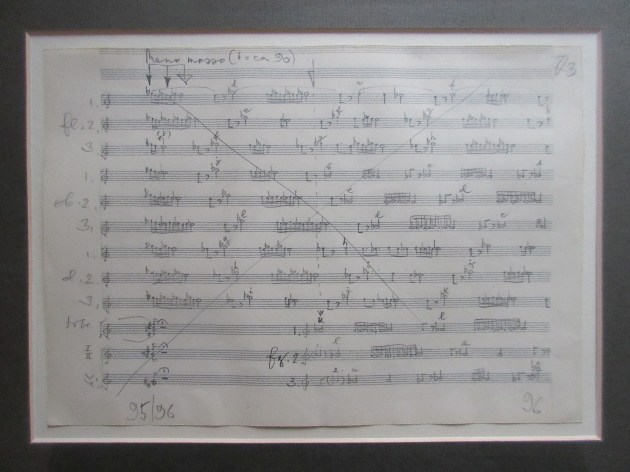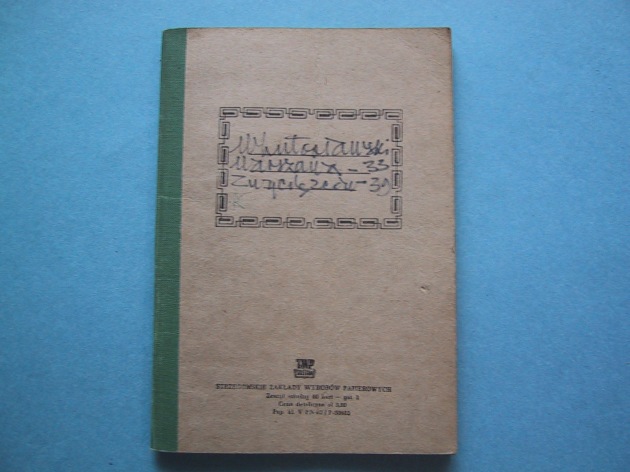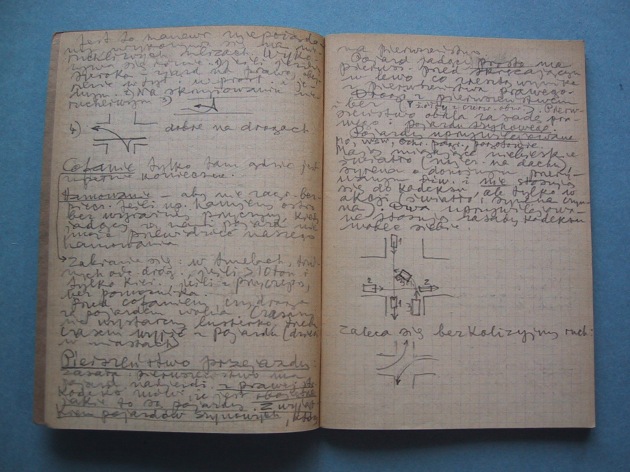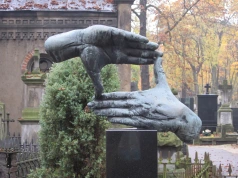The commonly accepted score line is Roussel 3, Lutosławski 1. Or, in musical parlance, Roussel’s Third Symphony is usually linked with Lutosławski’s First. Lutosławski himself laid emphasis on the significance of the French composer’s work, especially with regard to symphonic form. Charles Bodman Rae investigates this relationship more than others when he also finds motivic functional patterns linking the slow movements of the two symphonies.
In his conversations with Irina Nikolska (Stockholm, 1994; p.81), Lutosławski added another dimension:
I like this composition very much. There was a period in my life when I was simply captivated by it. Even today I consider it a chef-d’oeuvre. What an inventiveness in the field of melody! (A rare thing nowadays.)
I was reminded of this when I spent three days researching in Lutosławski’s house in late September 2002. There on his shelves was his score of Roussel’s Third Symphony, which Lutosławski had heard in Warsaw as a teenager at the start of the 1930s. It even had his name stamped on the cover (does the stamp help to date Lutosławski’s purchase of the score?).

More interestingly, tucked inside were three folded pieces of manuscript paper on which Lutosławski had transcribed some of the main themes of Roussel’s symphony. (I did not come across any transcriptions of any other works by other composers.) They are not in chronological order, and the scherzo is ignored. It is quite possible that Lutosławski did this much later in his life, when he was preparing a lecture on Roussel’s symphony that he gave at the Academy of Music in Basle. (The text is translated in Zbigniew Skowron’s collection Lutosławski on Music (Plymouth, 2007; pp.193-97); he thinks that it was probably delivered in June 1970.)
The ‘first’ sheet contains two themes: (i) the first six bars of the first movement, Allegro vivo, and (ii) the opening ten bars of the finale, Allegro con spirito.

The ‘second’ sheet has just one theme: (iii) the first ten bars of the second movement, Adagio.

The ‘third’ sheet has two themes, both from the finale: theme (iv) picks up the fifth bar of fig.65 and takes it four bars, while theme (v) jumps to the very end of the movement (excluding the last two bars), starting at fig.80.

What struck me most was this ‘last’ sheet. Combined with comments in his Basle talk, it reinforced something that I had perceived long ago and yet which – to the best of my knowledge – no-one has ever pointed out. If correct, it sheds new light on Lutosławski’s relationship with Roussel’s Third Symphony.
In the second part of his Basle lecture (the first part covers issues such as the neglect of Roussel’s symphony and the definition of neoclassicism), Lutosławski goes through the key thematic material. He gives page numbers and contextual musical information, although it is not a thoroughgoing analysis. He does focus, however, on what he calls the ‘motto theme’. This evidently intrigued him.
The theme inveigles its way into every movement, sometimes overtly, sometimes indirectly. For example, it is incorporated into the violin line at fig.1, although Lutosławski does not mention this first instance.

In the first movement, he refers to page 10, where the flute figure embraces the theme (here it is on its recapitulation, on violins, six bars after fig.17, on p.30).

More obviously, the motto theme thunders out on page 27 (four bars before fig.16).

Lutoslawski begins his observations on the Adagio with the motto theme – see manuscript above, theme (iii). He then cites the semiquaver fugato four bars after fig.31 (p.50) as beginning with the first five notes of theme, ignoring the fact that it is prefaced by a slow version in the first violins.


He reserves special delight for the end of the second movement. He is captivated by the motto theme’s triple appearance, starting six bars after fig.38. On pages 66-67, marked again Adagio, the theme is played in succession by solo flute, solo horn and solo violin. Lutosławski comments: ‘These three entrances represent for me a particular, rare beauty’. This is the flute entry.

When it comes to the third movement, Vivace, Lutosławski makes no explicit reference to the motto theme, although it is embedded in what he labels a ‘call to attention’ for the main theme that follows a bar after fig.41 (p.70).

For the finale, Lutosławski first cites the main theme – (ii) above – and then a violin phrase ‘worthy of attention’ – (iv) above. He highlights the motto theme at fig.71 (p.119) that comes just before the recapitulation: ‘This time it is played by the solo violin against a background of harmonies that are both simple and sophisticated, and it constitutes one of the most beautiful moments in the whole work’. This is the start of a section that lasts for almost twenty bars.

Finally, Lutosławski comes to the peroration that crowns Roussel’s Third Symphony – theme (v) above: ‘The recapitulation ends with the motto theme; this time in a solemn version, but free of any pomposity. It is a gorgeous completion of this extraordinary work’.
It is obvious from this text that Lutosławski’s enthusiasm for Roussel’s symphony was undiminished, from the Polish premiere at the start of the 1930s to his Basle lecture 40 years later and beyond, as when he spoke with Charles Bodman Rae in 1988 (see The Music of Lutosławski, p.28, fn.9). In fact, his enthusiasm was not unconditional, as his Basle lecture reveals. Nevertheless, it was ‘in his bones’, it was part of his musical life-history.
So one should not be surprised that its influence resurfaced more than 30 years after the First Symphony. In addition to ‘Roussel 3, Lutosławski 1’ we may surely add ‘Roussel 3, Lutosławski 3’. The reason is staring us in the face, although it appears to have passed unnoticed. I would be extremely keen to hear if anyone has written about this already.
Let me cut to the chase by recalling Lutosławski’s admiring phrase: ‘What an inventiveness in the field of melody!’.
Compare the various versions of the motto theme in Roussel’s Third Symphony with the climactic melody in Lutosławski’s Third. They share a descending succession of two intervals – variously minor 3rd/major 3rd followed by perfect 5th/minor 6th or major 6th. They then rise, almost or exactly, to where they started (usually octave/minor 7th in Roussel, minor 7th or major 7th in Lutosławski). The main anapaestic rhythmic kernel is the same in both. The principal difference lies in the conclusion of the motif, where Roussel, strange as it may seem, sounds more dissonant (it is because of the way in which he comes to rest not on the lowest pedal note, as Lutosławski does, but on the step above).

In the Lutosławski, the motivic seeds have been sown earlier, such as in the opening flute ‘bundle’, in the first trumpet at fig.63 and the violins five bars later. Before fig.81, the descending minor third resurfaces in the first violins. But the first overt appearance of the ‘motto theme’ is in the first violins at fig.84. In a manner parallel to the final statement of the motto theme in Roussel’s Third Symphony, Lutosławski gives his equivalent a climactic sweep at fig.97, just before the canonic coda.
I am not suggesting that Lutosławski was consciously referencing Roussel. He may have been doing so, or he may have realised the connection later, or he may have been totally unconscious of his tribute. The parallels are certainly uncanny, and I cannot now hear the concluding melody of his Third Symphony without recalling Roussel’s Third too.

 As was Lutosławski’s custom with rejected ideas, the page has a big X over it. The page is actually half a page of (I suspect) 28 staves, now measuring 25×17.5 cms, and the music is notated in pencil. It must have come some way through the movement as it is numbered ’96’.
As was Lutosławski’s custom with rejected ideas, the page has a big X over it. The page is actually half a page of (I suspect) 28 staves, now measuring 25×17.5 cms, and the music is notated in pencil. It must have come some way through the movement as it is numbered ’96’.




























































































